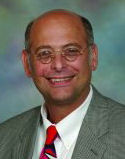The apocalyptic hospitalist
A PubMed search for the phrase “end of the world” had no matches, so we must make certain assumptions in this report.
We are now well into the year 2012 and it is important that we, as hospitalists, take the opportunity to implement strategies for the inevitable calamitous events fore-destined to take place later this year. The Mayan calendar organizes eras into 5,125-year increments, and Dec. 21, 2012 is the date signified as the tragic end of our current age.
To our knowledge, no randomized controlled trials have been performed regarding the preparation for apocalypse. While we begin stocking our basement bunkers with water, canned goods and ammunition, we wish to take note of our duty to our patients prior to and during this catastrophic world event.

In a PubMed search for the phrase “end of the world,” no matches were found, so we must make certain assumptions in this report. We cannot foretell which of many possible earth-shattering events will occur, but we can make logical and eschatological conclusions about the most likely disasters and provide some general guidelines. During this preparation process, we recommend stress-reducing strategies including deep breathing, medication, tai chi, and high-dose benzodiazepines.
Access to secure food sources may be limited, and many may turn to alternative supplies of protein. Review the new USDA dietary guidelines with your patients to encourage good dietary choices. Patients considering cannibalism should be advised about the advantages of a vegetarian diet. Given the high obesity rate in the United States, patients may want to consider the high saturated fat content of this potential food source. When it comes to the inevitable consumption of human flesh, we recommend stir-fry. In addition to dietary counseling, we recommend 30 minutes of exercise, five times a week, to better assist patients in evading lava flows, small to moderate fissures in the Earth's crust and telemarketers during Armageddon.
We cannot exclude the possibility of zombie involvement in the apocalypse. If a clinician suspects zombie-ism, we recommend an initial infectious disease consult to discuss possible prion infection due to the consumption of brain matter. There are no reports of kuru in zombies but it can be assumed that patients with zombie-ism will be noncompliant when advised to reduce encephalous intake. Orthopedic consult may be beneficial to evaluate nerve impingements and abnormal gait. Zombie translation services can usually be obtained from other members of the zombie community currently employed at your local department of motor vehicles. (See also “Day of the Undead: The Zombie Intern, “ ACP Hospitalist, November 2010.)
We anticipate a sharp increase in hospital admissions during the apocalypse as a result of associated widespread earthquakes, magnetic pole shifts, and volcanic eruptions. To address this, hospitals will need to ensure flexible staffing during this time. Facilities management should be encouraged to build single serpentine lines, similar to theme parks, at the admission office. Those with adequate staff may outfit team members with tablet computers to easily register patients and escort them into waiting areas. Here, patients can rest and read a magazine until their clinician is ready to see them. Due to the increase in patients, additional reading material may need to be provided in waiting rooms. May we suggest a bulk order of ACP Hospitalist?
After an extensive review of the ancient literature, we found another troubling occurrence related to the end of times: rivers of blood. Hematario may, at first, be disconcerting, but we recommend that health care facilities take what we call a “lemonade” approach to the problem. Due to the expected landslides, orbital shift, and geyser-related injuries, blood donations will likely be diminished. In this scenario, it is our recommendation that river blood be used once current blood bank supplies are exhausted. While we cannot, even in a perfect apocalyptic situation, anticipate the specific antigens present, we would hope the river blood to be O-negative, thus obviating the need for cross-matching. But we suspect in this dismal situation all such sanguinous flow will be AB+. Contamination must be considered, and a rigid system of filtering insects, waste, soil and miscellaneous auto and body parts should be implemented when possible. It is unclear if all water will turn to blood, or if this phenomenon is limited only to rivers and tributaries. If municipal water supplies are affected, sourcing of blood for transfusions may be as simple as turning on your tap.
Based on our research, and the possible biases involved, we cannot exclude the possibility of spontaneous individual disappearances (rapture) occurring during this time, resulting in lost man-hours searching for patients, as well as increased related costs due to the loss of gowns, IV lines and other equipment. It is probable that these individuals will not pay their inpatient bills, and reimbursement from Medicare and Medicaid would be challenging given the likely collapse of government. Unfortunately, there is no billing code for “end of the world” consultations.
The above considerations will not be necessary for facilities located in California, as it will apparently tumble into the sea.
Finally, we are planning a prospective study of the benefits of preparation for cataclysm survival. We hope to publish these results but suspect that by then there will be no peers left to review our manuscript.



